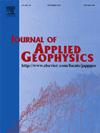Source influences of grounded-wire transient electromagnetic soundings: A systematic review and investigation
IF 2.1
3区 地球科学
Q2 GEOSCIENCES, MULTIDISCIPLINARY
引用次数: 0
Abstract
Grounded-wire sources serve as critical transmitting elements in the transient electromagnetic method (TEM). Despite the sustained interest in understanding the impact of grounded-wire sources on the data collected, there remains a notable deficiency in thorough research and discourse on this topic. This study employs numerical simulations and field measurements to investigate the various factors that influence the effects of grounded-wire sources on TEM soundings, particularly focusing on aspects such as size, shape, shallow local anomalies, and the turn-off effect. The findings indicate that the dimensions of the source can significantly affect the early signals observed. Neglecting the actual shape of the source may lead to considerable deviations in the inversion results. Furthermore, local electrical heterogeneities beneath the source can produce overprint effects, resulting in substantial distortions of the observed signals. The turn-off time of the grounded-wire source exhibits a positive correlation with both the source length and the transmitting current, while it shows a negative correlation with grounding resistance. It is recommended that practitioners meticulously document the shape and position of the source. Additionally, it is advisable to position the source in regions characterized by simple and flat geological formations whenever feasible. The design of the source length and the intensity of the transmitting current should be carefully calibrated to accommodate the varying detection requirements for both shallow and deep targets. The implications of this research are significant for the construction, data processing, and interpretation of TEM soundings that utilize grounded-wire sources.
接地线瞬变电磁测深的震源影响:系统回顾与研究
在瞬变电磁法(TEM)中,地线源是关键的发射元件。尽管人们对了解接地线源对所收集数据的影响一直很感兴趣,但对这一主题的深入研究和论述仍然存在明显的不足。本研究采用数值模拟和现场测量的方法,研究了影响接地线源对瞬变电磁法探测效果的各种因素,特别关注了尺寸、形状、浅层局部异常和关断效应等方面。研究结果表明,震源的尺寸对观测到的早期信号有显著影响。忽略震源的实际形状可能会导致反演结果出现相当大的偏差。此外,源下的局部电异质性会产生套印效应,导致观测信号的严重失真。地线源关断时间与源长度和发射电流均呈正相关,与接地电阻负相关。建议从业人员仔细记录源的形状和位置。此外,在可行的情况下,建议将震源定位在地质构造简单平坦的地区。源长度和发射电流强度的设计应仔细校准,以适应浅层和深层目标的不同探测要求。本研究对利用接地线源的瞬变电磁法探测的构造、数据处理和解释具有重要意义。
本文章由计算机程序翻译,如有差异,请以英文原文为准。
求助全文
约1分钟内获得全文
求助全文
来源期刊

Journal of Applied Geophysics
地学-地球科学综合
CiteScore
3.60
自引率
10.00%
发文量
274
审稿时长
4 months
期刊介绍:
The Journal of Applied Geophysics with its key objective of responding to pertinent and timely needs, places particular emphasis on methodological developments and innovative applications of geophysical techniques for addressing environmental, engineering, and hydrological problems. Related topical research in exploration geophysics and in soil and rock physics is also covered by the Journal of Applied Geophysics.
 求助内容:
求助内容: 应助结果提醒方式:
应助结果提醒方式:


